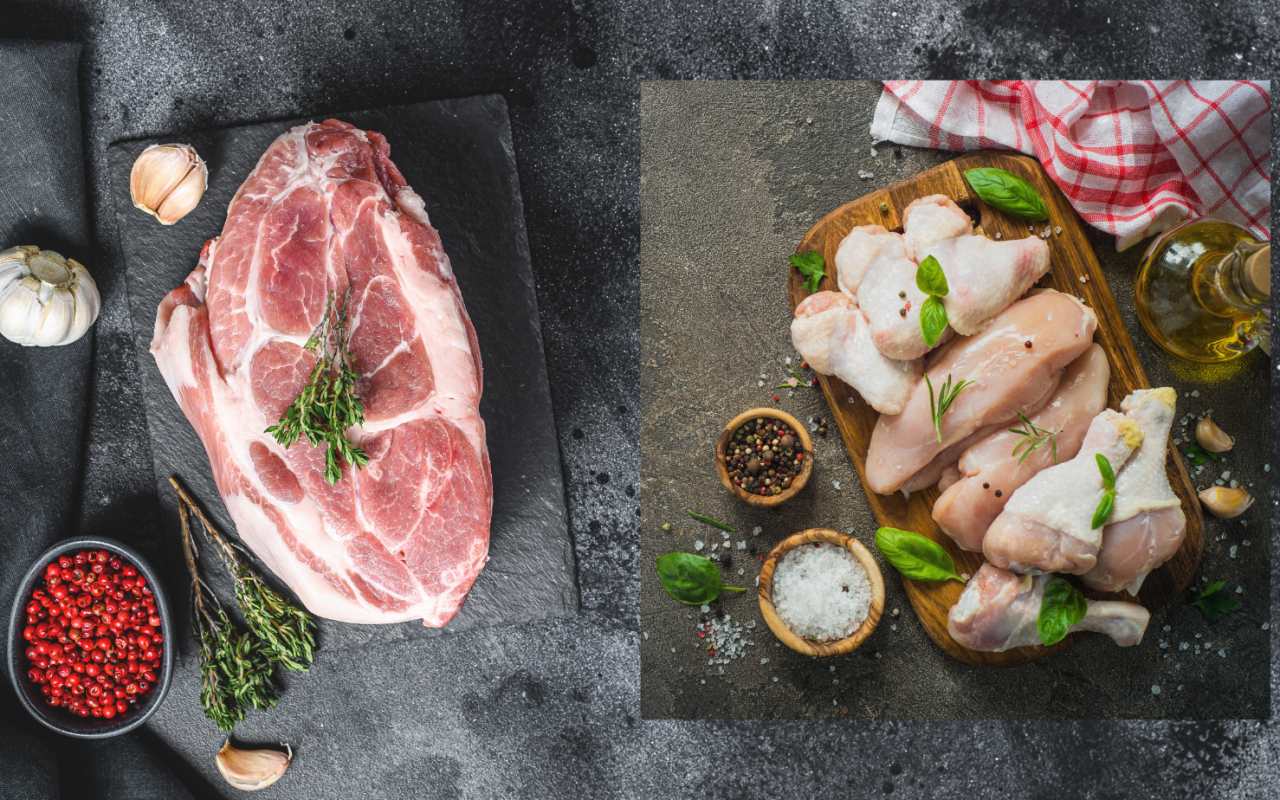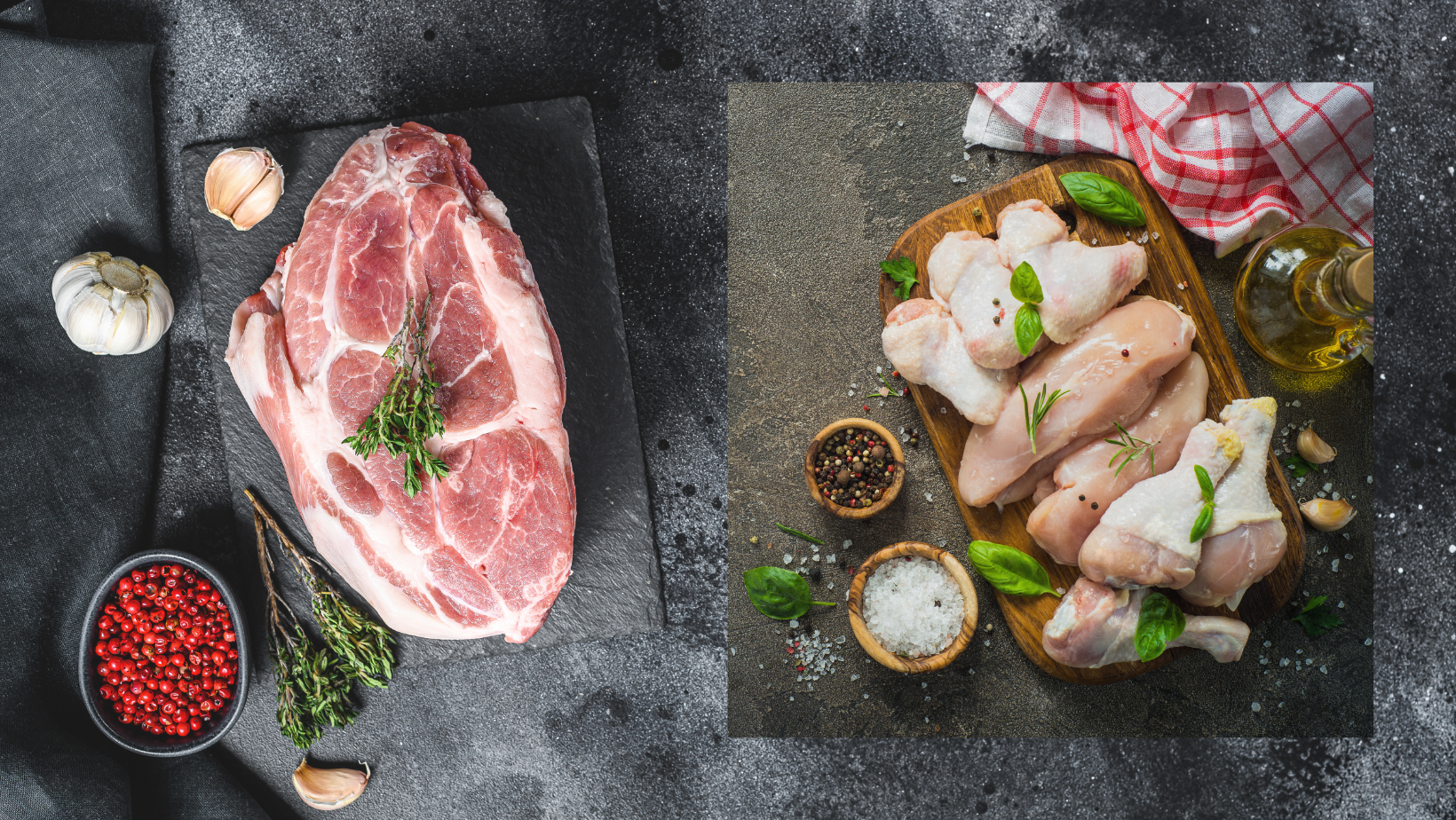
Pork, chicken, and turkey: tasty and healthy sources of protein
With nutrition and healthy eating becoming increasingly relevant, adding pork, chicken, and turkey meat to the diet offers a delicious alternative. It is clear that meat is well liked and, although there are many types to choose from, some are gaining popularity for nutritional reasons. Such is the case of chicken, with an impossible to […]

With nutrition and healthy eating becoming increasingly relevant, adding pork, chicken, and turkey meat to the diet offers a delicious alternative.
It is clear that meat is well liked and, although there are many types to choose from, some are gaining popularity for nutritional reasons.
Such is the case of chicken, with an impossible to ignore nutritional value. A simple 150-gram cut of chicken (skinless) covers more than half of the daily protein needs of an adult. Not only is it rich in protein, but in phosphorus, essential vitamins and minerals, while also low in fat and sodium, according to Argentina’s Chicken Nutritional Information Center (CINCAP).
This lean meat, low in fat concentration, also stands out for its low cholesterol. And even though it is a great ally for low-fat diets, chicken is not only beneficial for its low lipid profile. It contributes 20 grams of protein for every 100 grams of meat, which makes it crucial for children’s growth and for those looking to gain muscle, as it also contains 40% of essential amino acids such as tryptophan, key for serotonin synthesis. Talking about micronutrients, chicken is rich in vitamins such as A, B6, B12, niacin, thiamin, and riboflavin, as well as minerals like iron, zinc, magnesium, potassium, and phosphorus. Being low in sodium, it is ideal for people with high blood pressure and also easy to digest, which makes it appropriate for people with sensitive stomach, recovering patients, and babies.
“Skinless cuts of chicken or turkey breast and leg are considered extra-lean or low in fat. They are an important source of protein and vitamin B. Pork is not far behind, as there are also various cuts with similar features, such as center loin, tenderloin, knuckle, inside ham, rump, and boneless leg,” said María Paz Aspillaga, dietician for Agrosuper’s “Eating better is in your hands.”
That is why we cannot forget the benefits of pork, which has been the object of many recent studies. One, conducted by the Chilean Pork Producers Trade Association (Asprocer) and Universidad de Chile’s Institute of Nutrition and Food Technology (INTA) analyzed various cuts, concluding that lean cuts such as tenderloin, shoulder and bone in loin are recommended for a healthy diet. Talking about protein, 100 grams of pork contribute 18 grams, making it a great source of energy.
All pork cuts are considered “an excellent source” of protein, providing on average 37% of the recommended daily intake in just 100 grams. This protein is also high in biological value, as it contains all the essential amino acids needed by that the human body. Additionally, pork is particularly low in calories: 184 kcal each 100 grams, and only 132 kcal in lean cuts such as hock, shoulder, bone in loin, tenderloin, and boneless leg. Similarly, it is low in cholesterol, with only 40 mg per 100 grams, and it also stands out for its high content of B vitamins, particularly B3, with more than 40% of the recommended daily intake.
Last but not least, turkey has established itself as a great option for those who follow a healthy balanced diet. Due to its high content of water (about 75% of its composition), it is not only juicy but also nutritious. Turkey is also rich in high biological value proteins and essential amino acids, which make it a key food for the body’s wellbeing. It also contains minerals such as magnesium, zinc, potassium, phosphorus, and selenium, as well as B vitamins, especially niacin, B6, and B12, and also folic acid.
Turkey has a remarkably low calorie contribution, with only 161 kcal per serving, which makes it the perfect ally for weight-loss diets. It is also a good source of iron for people with anemia, while its selenium level contributes both to boosting the immune system and reducing the risk of certain types of cancer, including lung, prostate, and breast. Its ability to counteract the effects of free radicals prevents cellular aging, and strengthens bone, muscle, nail, and hair health.
The World Health Organization recommends including lean meats in children’s diets as of six months of age, and pork fits perfectly with this recommendation. In older adults, pork’s high protein level helps maintain muscle mass, contributing to strength and balance, while its monounsaturated fats promote cardiovascular health.
